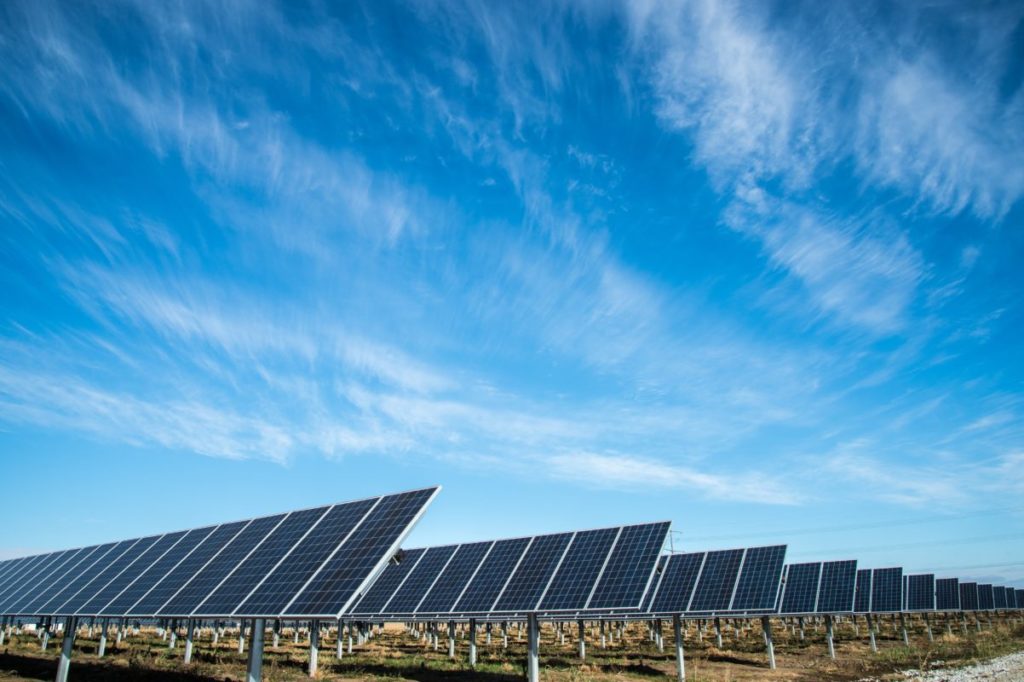
The state of Maryland has passed a law to streamline the approval process for solar PV and energy storage projects.
The Renewable Energy Certainty Act changes the considerations the Maryland Public Services Commission (PSC) must undertake before granting approval (via a certificate of public convenience and necessity (CPCN)) to solar PV and energy storage projects in the state.
Try Premium for just $1
- Full premium access for the first month at only $1
- Converts to an annual rate after 30 days unless cancelled
- Cancel anytime during the trial period
Premium Benefits
- Expert industry analysis and interviews
- Digital access to PV Tech Power journal
- Exclusive event discounts
Or get the full Premium subscription right away
Or continue reading this article for free
Under the act, permitting regulations are standardised across Maryland and supersede the powers of local jurisdictions. The act precludes local jurisdictions from adopting zoning laws which “prohibit the construction or operation” or “deny site development plans” for solar PV and energy storage projects which meet the permitting requirements.
The regulations impose land use requirements on proposed solar asset owners, including designated distances between the site and residential walls or property boundaries; minimising the grading of the site “to the maximum extent possible”; not removing topsoil from the land, and issuing a landscaping bond with the local county equal to 100% of the total landscaping cost.
The owner must also enter into a decommissioning agreement with the PSC and post a bond equal to 125% of the estimated decommissioning cost of the PV site and its related infrastructure.
Energy storage projects are subject to similar, though fewer, requirements.
Prior to the Renewable Energy Certainty Act, the PSC was required to enact “due consideration of the recommendations of the governing body of each county or municipality in which any portion of the project is proposed to be located” and local judiciaries have “the authority to approve or deny any local permit required under a CPCN issued by the PSC.”
The full requirements can be read in the bill, here.
Statewide reactions
The US environmental group the Sierra Club praised the new act, saying its Maryland chapter “commends General Assembly leadership for addressing our energy challenges head-on.
“[The law] seeks to address the specific challenge of overly onerous local zoning ordinances and provide certainty to the growing clean energy technology industry,” the group said in a statement.
“Solar can grow more rapidly in the near term than any other energy source”,” it continued, “However, several factors have impeded solar from reaching its full potential, and Maryland is falling far short of achieving its annual solar energy targets.”
According to the Solar Energy Industries Association (SEIA), Maryland had 2,417MW of solar PV installed at the end of 2024, representing 6.98% of its electricity demand and placing it 23rd of all 50 US states by installed PV capacity. The state government has set a target to meet 50% of electricity demand with renewable energy by 2030, with a 14.5% solar “carve out”.
However, reactions to the act have not been uniform.
“We recognise that communities have concerns about local control, and there are specific concerns about local environmental impacts, such as loss of farmland,” the Sierra Club statement said.
Indeed, the Maryland-based non-profit Eastern Shore Land Conservancy, which works in land conservation and stewardship around the Maryland coast, said the bill did not entirely resolve the “tension between promoting solar energy and preserving farmland.”
The group’s concern focuses on the bill’s provisions for Priority Preservation Areas – areas of designated agricultural or forestry resources.
Its statement says: “As proposed in the amended bill, local decision-making over solar projects in their jurisdiction would return to counties but only after 5% of lands in a county’s designated Priority Protection Areas were converted to solar.
“ESLC joined with others to assert the impacts of this provision pose too high of a risk to future agricultural viability and advocated to lower the threshold of solar development to 2%…Furthermore, two Eastern Shore counties, Dorchester and Somerset, do not have state-recognized Priority Preservation Areas, which means there is no mechanism by which these counties could ever regain some level of autonomy over solar siting.”
According to the fiscal and policy note filed alongside the act by the Maryland General Assembly, the act itself “specifies additional limitations on the siting of solar energy generating stations with capacities of more than 5MW– generally prohibiting or otherwise limiting their placement in specified growth/higher density areas or priority preservation areas.”
The Sierra Club said: “The legislation does not change current law that directs the Public Service Commission (PSC) to give consideration to concerns from local governments. Further, we want to reinforce that solar and storage projects will still be subject to environmental land use laws.”
PV Tech publisher Solar Media will be organising the fourth edition of Large Scale Solar USA in Dallas, Texas 29-30 April. After a record year for solar PV additions in the US, the event will dive into the ongoing uncertainties on tariffs, tax credits and trade policies as more domestic manufacturing becomes operational. Other challenges, such as the interconnection queues and permitting, will also be covered in Dallas. More information, including how to attend, can be read here.






